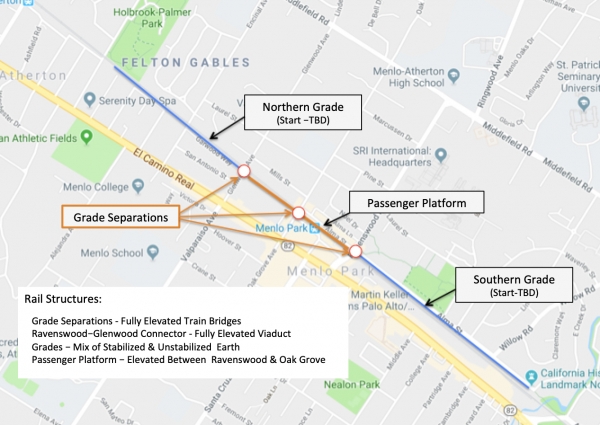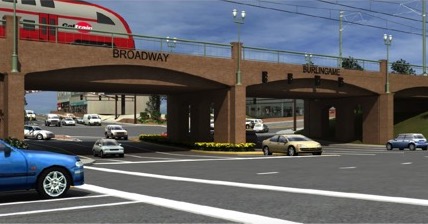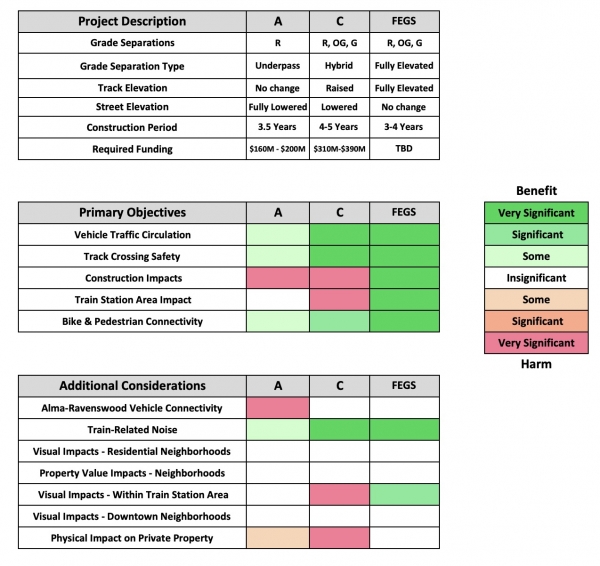
In my last post, I promised to explain why I, and others, believe fully elevating tracks downtown is a far superior “grade separation” solution for Menlo Park than the alternatives our city has studied so far. Our reasoning requires a major shift in mindset. For more than a decade, Menlo Park has viewed grade separations solely as a solution to future crossing-related problems. Caltrain plans to more than double the number of daily passenger trains within the next decade, and if rail crossings are not separated, BOTH traffic congestion and the safety of motorists, bicyclists and pedestrians will worsen. So naturally, the city has focused on “where and how Menlo Park could best separate its streets from tracks.”

Here is where the mind shift occurs. We believe the need to install grade separations has created many extraordinary opportunities to enhance our city, in particular the “up-in-coming” downtown business district in the train station area. Imagine an attractive viaduct as an iconic element in a beautifully landscaped plaza that transforms this location into a vibrant hub for social and retail activities and a major source of civic pride. Large viaduct openings would offer pedestrians and bicyclists convenient options for traveling between Merrill and Alma, and at eye-level, these streets would be visually integrated for the first time. The FEGS alternative offers another huge benefit: street and lane closures would be minimal during construction because NO street excavations are required. (Note: the grade separation alternative currently preferred by the city – Alternative C – requires concurrent excavations and closures on three streets.)
It’s a given that no grade separation solution will satisfy everyone as there are significant trade-offs between all the practical alternatives. That said, there are good reasons to believe a well-designed and well-performed FGEGS study will demonstrate that the NET benefits of this approach far exceeds those for the currently preferred Alternative C. The following tables summarize our expectations.
R = Ravenswood OG = Oak Grove G = Glenwood

A FEGS solution can take many forms in terms of track profiles. It’s important that our city council not exclude any feasible ones a priori based on the particular political bias of individual neighborhoods. All residents deserve the chance to weigh facts and arguments and express their informed opinions to our city council BEFORE a final decision is made.
Note: In my next post on grade separations, I will provide the rationale for the ratings in the above scorecards.
(This is the third post in a continuing series about planning for future Menlo Park grade separations.)



